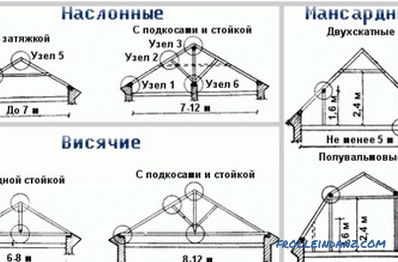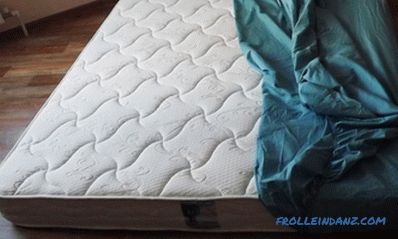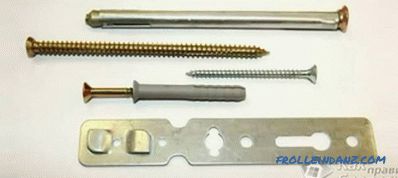From our article you will learn how to install a toilet with your own hands. This is a fairly simple operation, provided that you are able to shut off the cold water supply, and the supply and sewer pipes do not need major repairs. In this case, we will install a toilet with a lower location of the tank. This option is easier, since most of the weight of the tank in this case falls on the toilet. When installing a toilet bowl with a top tank, you will need reliable fasteners to maintain the weight of the latter (for brick walls this is not a problem, but in the case of walls made of hollow materials you will have to resort to special tricks).
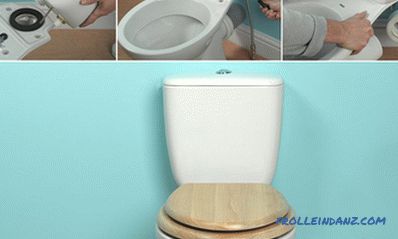
Tips for installing the toilet bowl
1. If during the repair undertaken in the bathroom, the floor height changed somewhat, it is necessary to compensate for the difference with an eccentric cuff - the so-called corrugations for the toilet bowl (for sewage) and flexible hose (for cold water supply). In case of large height changes, professional plumber skills will be required.
2. If the floor in the bathroom is not even enough, it is better to install the toilet on silicone sealant. You can also use small wooden / plastic wedges, but even here you can't do without sealant, since it allows you to evenly distribute the weight of the toilet bowl.
3. If the sewer pipes go down through the floor and not through the walls, you will need a rectangular elbow or a flexible corrugated cuff. This is not the only difference, but the main one.
Assembling and installing a toilet bowl
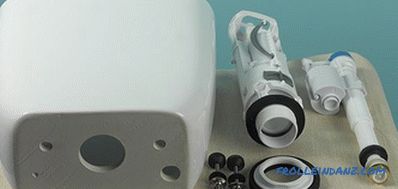
1. We recommend starting work by assembling the tank (drain system). Lay out all the details to make sure you have everything.
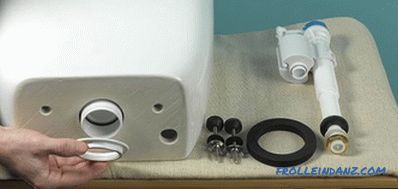
2. Follow the manufacturer's instructions for assembling the tank interior. The sequence of actions depends on the type of drain system used in your chosen model.
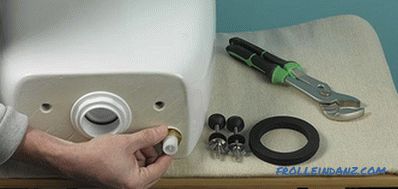
3. Make sure all parts are securely fastened, but do not apply excessive force when tightening the bolts and screws.
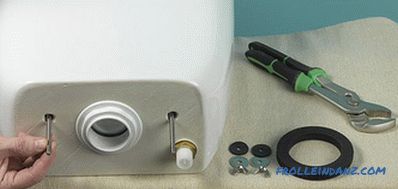
4. In most cases, complete with a tank sold bolts for attaching it to the toilet. Do not forget to put on washers and rubber tapered gaskets before inserting the bolts into the holes provided for them.

5. How to install the tank on the toilet, you will understand without difficulty. The main thing is to do it carefully and make sure that you do not forget to place a large ring-shaped gasket between them.
Installation of the toilet bowl with the tank
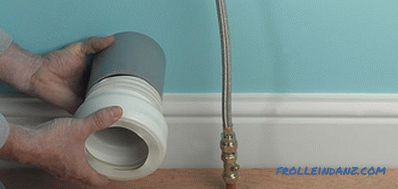
6. Insert the corrugated cuff (corrugated extension) into the sewer pipe, making sure it is snug. In our example, a simple straight sleeve is required. (When connecting the toilet to the cast-iron pipe, you will need a transition cuff with a diameter of 110 mm. See photo. It must be abundantly smeared with silicone sealant and inserted into the pig-iron pipe cleaned from dirt, see the photo. Only after that you can insert a corrugated plastic cuff into it. . SRBU. RU)

7. Move the toilet down to the sewer. Ensure that its release is flush with the installed nipple. Most likely, the way it is. But if there is no and the displacement is quite large, then you will need to use an eccentric corrugated cuff.
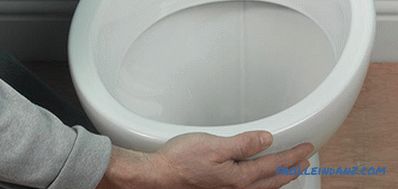
8. Gently place the toilet into its intended place, putting the cuff on the outlet.
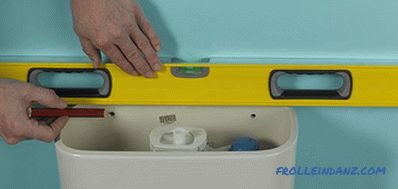
9. Ensure that the tank is level with a spirit level by placing the latter along the back wall. Through the back wall of the tank mark the place on the wall where you have to make holes for its fixation.

10. Do the same with the toilet itself: check its horizontal position with an alcohol level and mark the floor of the mounting holes on the floor, trying to be as precise as possible.
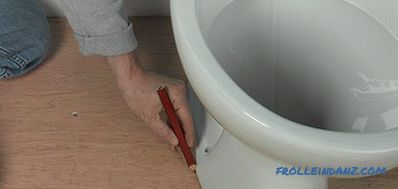
11. Mark with a pencil on the floor the edges of the base of the toilet. Knowing the exact position of the "legs" is useful to you when you finish the preparatory work and proceed to the final fastening of the toilet.
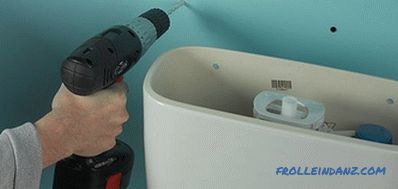
12. Move the toilet away from the wall. Drill holes for mounting the tank, focusing on the marks on the wall. Pick up (taking into account the wall material) and insert the dowels.
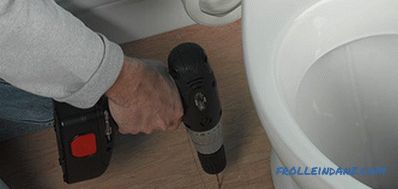
13. Drill holes in the floor at the points you marked. When drilling ceramic tiles, you will need a hammer drill and a drill for concrete. At the beginning of drilling, the pressure on the perforator should not be great, after passing through the tile layer, the pressure can be increased. Insert the dowels in the holes. If the floor is wooden, as in our case, they are not needed.
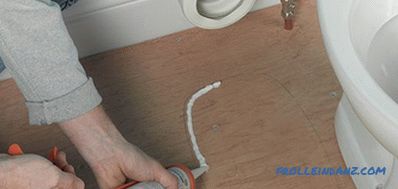
14. Before you put the toilet in place, apply silicone sealant to the floor along the marked line that corresponds to the border of the “foot” base.
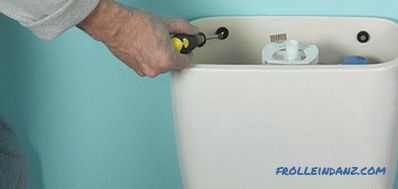
15. Place the toilet in its place. Screw the tank to the wall by inserting washers between the heads of the screws and the wall of the tank. Do not overdo it by tightening the screws.

16. Screw the base of the toilet bowl to the floor. In this case, the same rules apply: first, do not forget about the plastic washers, and second, do not tighten the screws too tight.
Water connection and end of installation
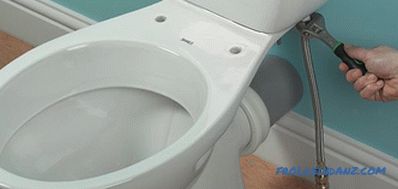
17. Connect the tank to the cold water pipe. With high probability for this, you will need a flexible connecting hose. The location of the connection depends on the position of the intake pipe on the new tank.
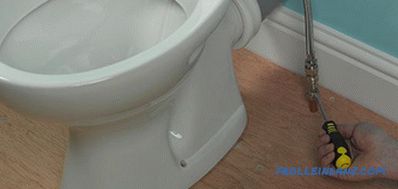
18. Turn on the water by opening the stop valve and check that there are no leaks at all connections. Also check the tightness of the articulation of the toilet with sewage and lubricate all connections with silicone sealant.
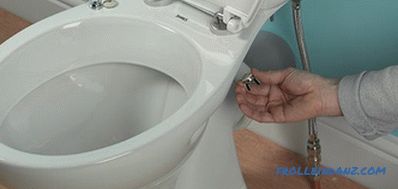
19. Install the toilet seat, as envisaged by its design. If necessary, adjust the seat so that it fits exactly the shape of the toilet bowl.

20. Apply silicone sealant around the base of the toilet bowl. Smooth out any irregularities with a damp sponge, ensuring a neat look.
Source of translation: www. wickes co. uk
